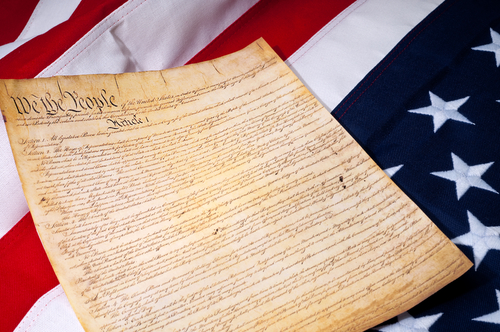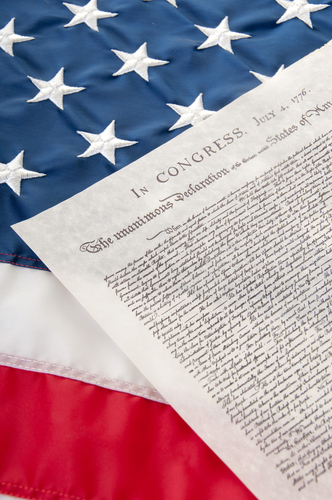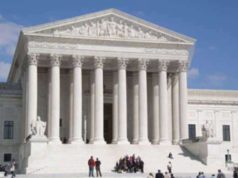
The 25th Amendment of the United States Constitution was ratified in 1967 and is a critical part of our nation’s governance. The 25th Amendment outlines the proper procedures for how to handle presidential succession in the event that a president is unable to perform their duties, whether due to illness, disability, or other reasons.
The idea for the 25th Amendment was first proposed in the wake of the assassination of President John F. Kennedy. Kennedy’s assassination highlighted the need for a clear and concise plan for presidential succession, as the vice president at the time, Lyndon B. Johnson, was suddenly thrust into the role of president without any guidelines on how to handle presidential incapacitation.
The 25th Amendment provides a clear framework for how presidential succession is to be handled. The amendment has four distinct sections that outline the procedures in the event of presidential incapacity or vacancy. Section 1 addresses the issue of presidential succession, stating that the vice president becomes president if the president is unable to perform their duties.
Section 2 of the 25th Amendment allows the president to nominate a new vice president if there is a vacancy in the vice presidency. The nominee must be approved by both houses of Congress before assuming the role of vice president.
Sections 3 and 4 outline procedures for handling presidential incapacitation. Section 3 allows the president to temporarily hand over their duties to the vice president if they are unable to perform their duties due to illness or other reasons. Section 4 outlines a process for removing the president if they are unable to fulfill their responsibilities.
The 25th Amendment has been invoked several times throughout history, including during the Watergate scandal, when President Nixon’s vice president, Spiro Agnew, resigned and was replaced by Gerald Ford. Ford later became president when Nixon resigned due to the Watergate scandal.
The 25th Amendment has also been invoked during periods of presidential illness or disability. In 2002, President George W. Bush invoked Section 3 of the 25th Amendment to temporarily transfer his powers to Vice President Dick Cheney while Bush received medical treatment.
Overall, the 25th Amendment serves as an essential part of our nation’s governance. It provides a clear framework for how to handle presidential succession and incapacity, ensuring that our government can continue to function in the event of a crisis. The amendment is a testament to the foresight of our founding fathers, who recognized the importance of having a clear plan in place for handling unexpected events that could impact the presidency.
In conclusion, the 25th Amendment remains a significant aspect of the United States Constitution, providing provisions for presidential succession and incapacity. It has been an essential tool in maintaining continuity in government throughout the nation’s history and serves as a testament to the importance of planning and preparation in times of crisis.
The 25th Amendment would address certain procedures regarding the offices of thePresident and the Vice-President. Most specifically, it entails proceduresregarding the succession to the Presidency, as well as determining the processto fill a vacancy in the Vice President office. Further provisions also include for procedures to be taken if the President is to be rendered incapacitated due to disabilities.
The 25th Amendment addresses an important issue that had already been a concern in previous legislation in the United States Constitution, and furthermore, actual events occurring in both the office of the President and Vice-President where confusion as to how to proceed would ensue. Though the Constitution addressedPresidential office procedures in Article II, the text proved to be ambiguous because it did not explicitly state whether the Vice President is to take the Presidential office, rather than just the position of “ActingPresident.” Furthermore, it did not address what procedures were to takeplace if the President died, resigned, or was removed from office. The 25th Amendment would be ratified by the states on July 6th, 1965.
The 25th Amendment proves to be one of the mostimportant Constitutional Amendments because it sets forth precedence in theextenuating circumstance that the President is removed from office, regardlessof the reason. Prior to the 25th Amendment, there was confusion regarding the procedures and who would then replace the President and to what extent that person would assume the Presidential office.
The first occurrence of this kind of situation resulted when President William HenryHarrison died while in office. Vice President John Tyler then assumed the roleof President, rather than just acquiring the position’s powers andresponsibilities. Tyler refused to be recognized as “ActingPresident” and would finally take the oath of office, making him the tenthUnited States President.
This would become known as the “Tyler Precedent,” which would informally establish that the Vice President would take the office of President in the event that the elected President were to die while in office. However, no formal legislation existed establishing such a procedure.
A similar event would again occur while President Woodrow Wilson was in office and suffered a stroke. No individual formally assumed the Presidential officeduring that time. Furthermore, the office of Vice President has been vacated sixteen times, with no one assuming the role.
The extenuating circumstances led to the clearneed for Constitutional Amendments that would create guidelines and proceduresif such events were to occur, as well delineating the exact position that theperson assuming the Presidential role would have. Two proposals were sent toCongress for the new Amendment that would provide for these guidelines, the Keating-Kefauver proposal and the Bayh-Celler proposal.
The Keating-Kefauver proposal would delegate Congress the power to determine when aPresident would be considered disabled, and thus, unable to carry out the responsibilities of the position. Concerns would arise dealing with thepossible abuse of authority by Congress by giving them such power, and thus,this proposal would be rejected. The Bayh-Celler proposal, which is the one the 25th Amendment is ultimately based on, stated that the Vice President would become “Acting President” in the case the President would become disabled. It also included procedures regarding the vacancy of the Vice President office in such a situation.
The 25th Amendment would be divided into fourdistinct sections, each addressing particular procedures regarding events inwhich the President-Elect would no longer be able to carry out the duties ofthe office. Section 1 would include the “Tyler Precedent” as theaccepted procedure under law, wherein the Vice President would assume thePresidential Office if the President were to die, be removed from office, orresign. Section 2 states that in the case that the VicePresident office is vacated, the President would appoint the person to fill that position in concurrence with a majority vote by both Houses of Congress.
Section 3 deals with the situation in which thePresident is disabled. The President must provide a written declaration to thePresident pro tempore of the Senate and the Speaker of the House ofRepresentatives stating that he is unable to carry out his responsibilities.The Vice President would then serve as “Acting President” until yetanother written declaration is issued by the President stating that he/she isable to resume the duties of the position. Section 4 is the only provision that has not beenimplemented. This provision gives the authority to the Vice President todeclare the President as disabled by submitting a written declaration to thePresident pro tempore of the Senate and the Speaker of the House ofRepresentatives. This is only to occur if the President him/herself cannot provide for a written declaration due to the disability.
However, ifthe President is not disabled to that extent, a written declaration statingthat he/she is able to resume the office would reinstate him as President. Ifthe Vice President and the Cabinet are still dissatisfied with the condition ofthe President, yet another declaration can be submitted. At this juncture,Congress must meet within 48 hours if not in session. Congress must then rendera two-thirds vote regarding whether or not the President is capable of carryingout the responsibilities of the office. A period of 21 days is allotted toreach such a decision. If no decision is met, the President would still remainin office. Otherwise, the Vice President would continue as “ActingPresident.”

























